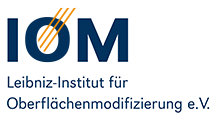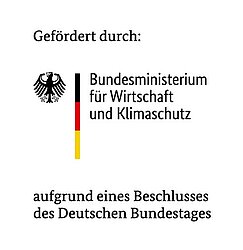The development of electric propulsion (EP) is progressing rapidly. Ambitious missions such as a manned flight to Mars are spurred on by the possibilities of EP or become technologically feasible in the first place. At the same time, a rapid commercialization of space flight is taking place, which can be summarized under the keyword New Space. In addition to the established suppliers of EP systems such as ArianeGroup, Sitael, Airbus or Thales, many new suppliers are entering the market with their own products, especially in the field of communication satellites. In order to meet the rapidly evolving requirements of the space industry in the EP field, to establish comparability between EP systems and to ensure the safe operation of EP systems in space, the development of state-of-the-art instrumentation for testing and qualification of such EP systems is urgently needed. To this end, concepts for test facilities for the qualification and standardization of EP systems are to be developed. The main goal must be the transferability of the performance and operating parameters of EP systems determined in test facilities on Earth to operation under real conditions in space. The characteristics of electric propulsion thrusters must therefore be recorded unambiguously and in a standardized manner. For this purpose, appropriate standards must be defined and instrumentation developed to test EP technologies for space on Earth.
Funded by the Bundesministerium für Wirtschaft und Klimaschutz (BMWK) with 667,925 Euros, the joint project Ref4EP: Reference ion engines and diagnostic standards for electric space propulsion for small satellites aims to develop methods and build up structures to establish such standards at the national level. On the initiative of the Deutsches Zentrum für Luft- und Raumfahrt (DLR), a consortium of four partners has been formed with relevant experience in the field of ion engine diagnostics and the development of ion sources. In addition to the Justus-Liebig-Universität (JLU) in Gießen, these include the Leibniz-Institut für Oberflächenmodifizierung e.V. in Leipzig, the Christian-Albrechts-Universität zu Kiel and the Technische Hochschule Mittelhessen. The aim of the joint project under the leadership of JLU is to develop two reference diagnostics for beam analysis of EP systems and to compare them with a reference ion source within the framework of the project. The experimental validation of the developed ion source as well as the diagnostics is carried out at various space simulation facilities in the form of an interlaboratory comparison.
The cross-sectional unit "Tools" of the Leibniz-Institut für Oberflächenmodifizierung e.V. deals with the development and characterization of a reference gridded ion source as a standard for the characterization and validation of beam diagnostics as part of its sub-project Development and characterization of a reference gridded ion source for beam diagnostics. Furthermore, the IOM is developing a Faraday probe for the measurement of ion current densities. The sub-project is funded by the BMWK with 187,133 Euros under the funding code 50RU2301C.
Contact:
Dr. Daniel Spemann
Head of the cross-section unit "Tools" at IOM
E-Mail: daniel.spemann(at)iom-leipzig.de

